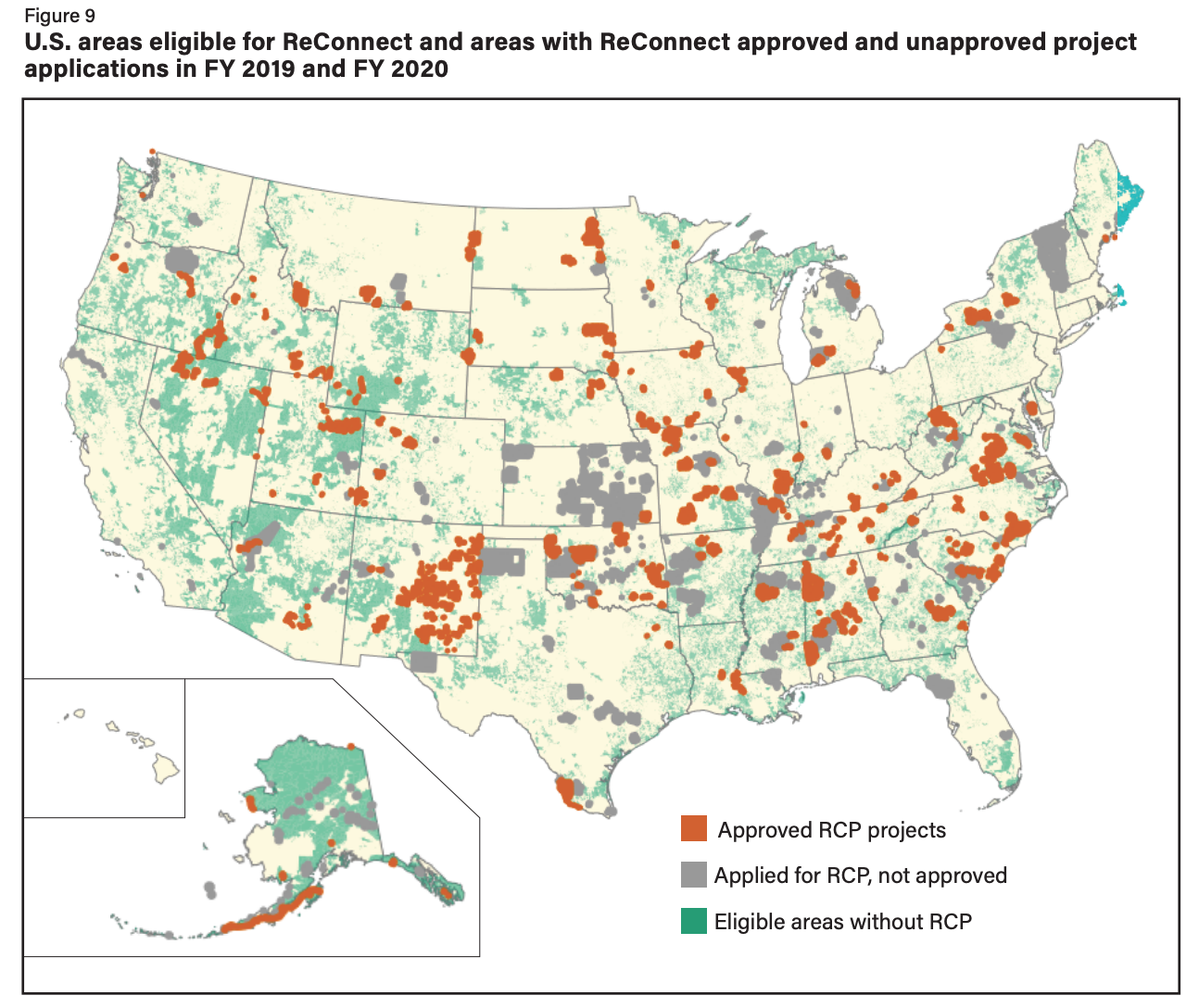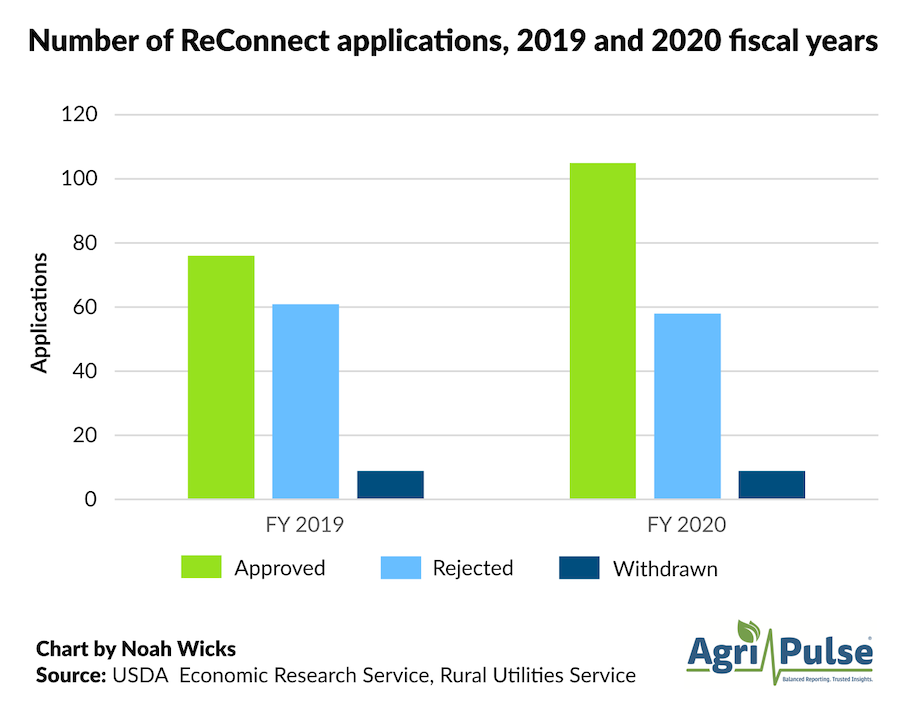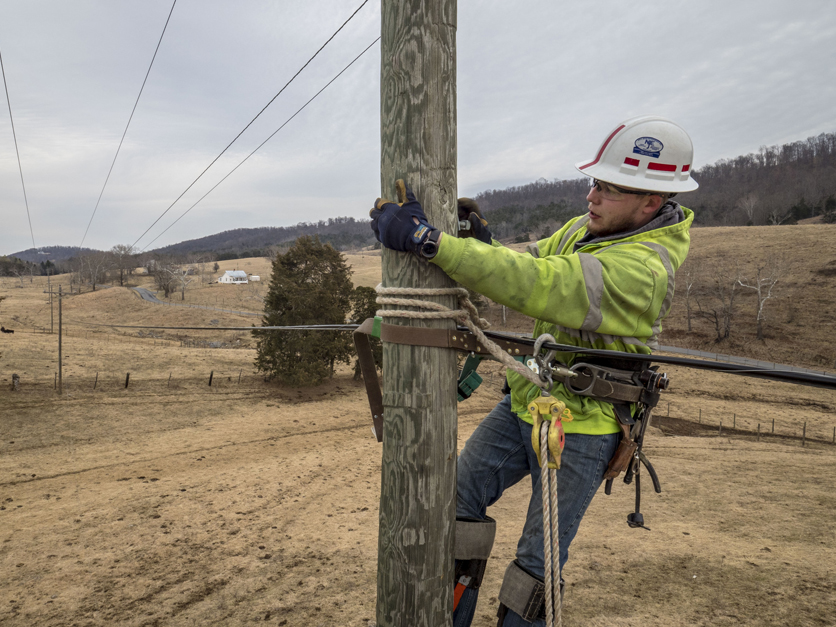Lawmakers want to use the farm bill to make the Agriculture Department's ReConnect loan and grant program for rural broadband permanent, but they still need to settle a debate about whether to ease the required service speeds.
ReConnect, which was started as a pilot program through an annual appropriations bill in 2018, only serves populations in areas deemed “rural” by the USDA and requires that at least 90% of the households in proposed project areas have download speeds slower than 100 megabits per second downstream and upload speeds below 20 Mbps.
Current ReConnect rules require participants to install 100 Mbps “symmetrical speed” networks, or those that support speeds of 100 Mbps downstream and 100 Mbps upstream.
Since 2018, ReConnect has received funding from annual appropriations bills in addition to $1.9 billion allocated through the bipartisan infrastructure law enacted in 2021.
Several lawmakers have proposed to authorize ReConnect through the farm bill, which would give it standing for the next five years rather than being reliant on annual appropriations, though divisions have begun to form on speed standards, according to Shirley Bloomfield, the CEO of the NTCA — Rural Broadband Association.
The debate comes down to whether lawmakers should codify the program’s current 100/100 Mbps symmetrical speed standard or whether it should be set at 100/20 mbps, with some groups saying the 100/100 requirement is better suited to keep pace with future speed needs. Others, however, argue that the standard favors fiber over other technologies, and building networks to that specification takes longer and costs more than building to 100/20 requirements.
“It is currently 100/100 and that has been part of the regulations under the ReConnect program,” Bloomfield told Agri-Pulse. “So that is the battle at play as they look to make it a permanent program.”
Bloomfield said setting the speed requirements at 100/100 rather than 100/20 would make the new networks more “future proof” and limit the need for providers to update them in the future due to service insufficiency. Setting them at 100/20, she said, would be “going backwards in terms of capacity and usage.” Map by Economic Research Service“I think, symbolically, the message it sends to rural Americans is we’re stepping you backwards,” Bloomfield said. “I just find that at a time when we talk about a rural renaissance, the second breath of life for rural communities, the services broadband brings, it is just absolutely the wrong direction to be going.”
Map by Economic Research Service“I think, symbolically, the message it sends to rural Americans is we’re stepping you backwards,” Bloomfield said. “I just find that at a time when we talk about a rural renaissance, the second breath of life for rural communities, the services broadband brings, it is just absolutely the wrong direction to be going.”Not all broadband groups agree, however. David Zumwalt, the president and CEO of the Wireless Internet Service Providers Association, told lawmakers at a hearing in June that focusing on 100/100 Mbps symmetrical speeds prevents many providers from applying for funding, which he said leaves “many communities out in the cold.” Complying with this requirement, he added, takes additional time.
Matt Mandel, WISPA’s senior vice president of government and public affairs, said broadband programs should meet the varied needs of communities across different geographies. A 100/100 speed standard, he said, is often seen as “code for fiber build-out." While fiber can work well in some places, he said it can also be time-consuming and expensive to install in others.
“We’re not saying rural communities should get worse service — they should get really good service,” Mandel told Agri-Pulse. “They shouldn’t have to wait for service that they don’t use or don’t need.”
But Rep. Zach Nunn, R-Iowa, told Agri-Pulse 100/100 Mbps service is essential for precision agriculture, and that the HVAC and environmental control systems in new livestock and poultry barns also require high-speed internet connections.
Nunn is sponsoring the Reconnecting Rural America Act, which would codify the ReConnect Program’s 100/100 Mbps standard in the farm bill. The bill also would lower the project eligibility threshold for ReConnect funding from 90% of an area having speeds below 100/20 to 75%.
“It’s a competitive advantage in other communities who already have this,” Nunn said of 100/100 speeds. “We don’t want to see agriculture in Iowa or anywhere in the country fall behind because they aren’t making the right level of investment in broadband from the get-go.”
Cut through the clutter! We deliver the news you need to stay informed about farm, food and rural issues. Sign up for a FREE month of Agri-Pulse here.
The first two funding rounds of the ReConnect program drew 318 applications, nearly half of which were submitted by for-profit internet service providers, or ISPs, according to a recent study by the Economic Research Service.
The program, according to ERS’s analysis, is available for approximately 0.6% of the 2020 U.S. population. Only 0.12% of the U.S. population in 2020 lived in the project service areas approved in the first two rounds, according to the report.
Ninety-seven percent of the approved projects in ReConnect's first two rounds were for fiber-to-the-premises service, the ERS report said.
 While ReConnect, which is now in its fourth round of funding, has provided around $4.56 billion for rural broadband projects so far, it pales in comparison to the $42.45 billion in broadband funding that is currently being allocated to states for the Broadband Equity Access and Deployment Program.
While ReConnect, which is now in its fourth round of funding, has provided around $4.56 billion for rural broadband projects so far, it pales in comparison to the $42.45 billion in broadband funding that is currently being allocated to states for the Broadband Equity Access and Deployment Program.
Brian Whitacre, an agricultural economist at Oklahoma State University, said states are still in the lengthy process of planning where new infrastructure will be built using the BEAD funding. He said lawmakers should be aware of those plans when considering whether to add ReConnect to the farm bill.
“It’s going to take us five years to get this stuff rolled out and I just don’t see how we can have another program on top of that at the same time,” Whitacre told Agri-Pulse. “So there could be a case for just holding off until the next version.”
For more news, go to www.Agri-Pulse.com.


